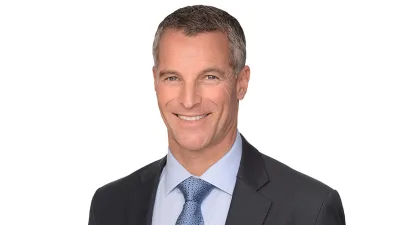One of the Biggest Dangers Retirees Face – Sequencing Risk


Any adviser who had retired clients invested around the time of the GFC can provide testament as to just how critical the timing of market falls is in determining future wealth.
The risk of a big downturn in markets (such as the GFC) just before or after clients retire, which is generally the point of maximum wealth in their lives, has the biggest dollar impact and can be devastating. A large fall at this stage hurts more than at any other stage of life.
For retirees, in addition to falling with the market their portfolio value is reduced further because they are drawing down an income to fund their retirement. Protecting against sequencing risk is therefore paramount in the years just before, or just after, retirement.
As clients approach retirement they become increasingly exposed to sequencing risk. Retirees are especially sensitive, as they don’t have the luxury of time to recover and risk outliving their capital. As a result of a decreased retirement pool, clients are left with two options: extend (or re-enter) their working life and/or reduce their standard of living in retirement.
This is highlighted in the two charts below.
Daniel and Kylie – saving for retirement.
- Both clients have $100,000 and are contributing a further $5,000 (rising by 2.5% each year) to their superannuation each year for 25 years until they retire.
- The portfolios generate the same total investment returns over the 25 year time horizon, but the pattern of these returns is reversed. Daniel’s portfolio delivers three consecutive years of negative returns early in the period, but his portfolio recovers strongly when positive returns are delivered near the end of the term.
- Kylie’s portfolio, despite starting strongly, delivers three consecutive years of negative returns at the end of the period, just as she approaches retirement.
Losses close to retirement can be damaging
Source: AMP Capital. Illustration only. Assumes a $100,000 investment, portfolios generate the same total investment returns, but the pattern is reversed, additional investment of $5,000 each year starting from year one, size of additional contributions increases by 2.5% each year.
Bob and Jane – in retirement
- Each client’s portfolio generates investment returns in the same order as before – but both are drawing an annual income of $40,000 (rising by 2.5% each year) from their portfolio each year for 25 years.
- Jane experiences positive returns early in retirement and, despite making withdrawals, her portfolio continues to rise in value through her retirement. Three years of negative returns late in her retirement will not stop her from being able to continue to withdraw sufficient income.
- But Bob’s performance is concerning. After 13 years his portfolio has depleted significantly, leaving insufficient funds to pay the annual income on which he needs to live and so he will outlive his savings. Bob is unfortunate to start his retirement with three consecutive years of negative returns and, as the chart shows, making withdrawals can significantly amplify the effect of short-term market falls.
The need to draw down an income inhibits the ability of the portfolio to recover after market falls.
Source: AMP Capital. Illustration only. Assumes a $700,000 investment, portfolios generate the same total investment returns, but the pattern is reversed, additional investment of $5,000 each year starting from year one, size of additional contributions increases by 2.5% each year.
Final thoughts
As we can see, the timing of a market shock will dramatically alter investment returns and the length of time retirees’ capital lasts. Advisers with clients nearing, or in, retirement, at the point of maximum wealth, should take steps to preserve capital and protect against sequencing risk. Reducing risk and sheltering a portfolio from a significant decline, similar to that experienced during the GFC, could make a huge difference to its value and could make the difference between a happy and a miserable retirement.
To find out more about protecting your retired client’s portfolios, fill out the form below to download the ‘3 Key Ways to Minimise Risk in Retirement’ whitepaper.
Recommended for you
While the Magnificent Seven have been a runaway success – they drove almost two-thirds of the S&P 500’s 24% return in 2023 – our view is that the largest seven companies in Australia could anchor our market in the medium term. So, how can investors diversify their portfolios and make better returns without turning to more volatile small caps or offshore markets? The Ex-20 might be the answer.
Hybrid securities can offer investors equity-like returns, yet with a lower level of risk. Here’s a rundown on hybrids and why they are attractive investment options.
Diversified managed funds could make an ideal addition to a managed account, as the broad toolset available to the fund manager enables them to seek outperformance and manage risk, according to Allan Gray.
The number of advisers using managed accounts has exploded in recent years, often at the expense of diversified managed funds. But diversified funds deserve a place in almost any multi-asset portfolio, held either within or alongside a managed account, according to Allan Gray.















